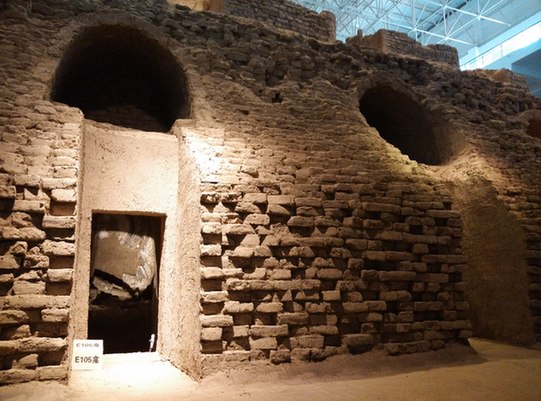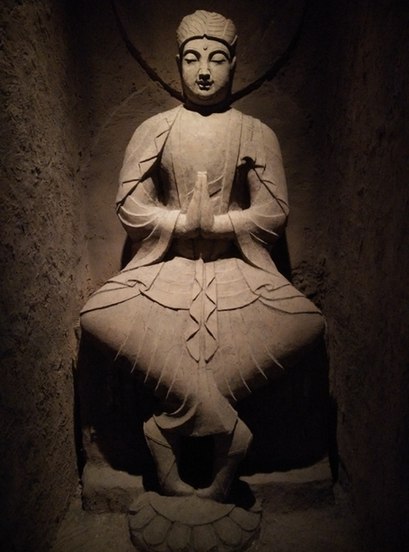Extend your summer while in Jimsar
china.org.cn / chinagate.cn by Hai Peng, August 18, 2016 Adjust font size:
 |
|
The West Great Temple of the Beiting Military Viceroy's Office has many grottos that feature a life-size Buddha statue. The rammed-earth structure stands 20 meters tall and stretches nearly 100 meters in its width. [Photo by Hai Peng/China.org.cn] |
The Grottos at the Western Temple ruin of the Beiting Military Viceroy's office show traces of the mysterious religion of Manichaeism, which began in the city state of Babylonia and spread eastward all the way to China's eastern coast in the 13th and 14th centuries. The Buddhist statue artwork inside the grottos is a clear fusion of Manichaeism and South Asian Buddhism. How exciting it is to be able to picture in one's mind the spread of Manichaeism along the famed Silk Road and find evidence in a forgotten ruin is simply beyond description!
 |
|
This beautiful Buddha statue is very different from the fat Buddhas commonly seen in temples in the eastern part of China. From an art history perspective, the statue shows the fusion of South Asian Buddhist art and stylistic elements of Manichaeism, a religion that flourished in Central Asia around the 11th century. [Photo by Hai Peng/China.org.cn] |
Hai Peng is formerly a business editor and reporter with China Radio International. His footprints have covered over 140 cities of 30 provinces in China.